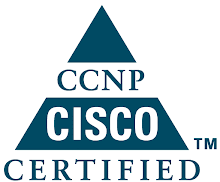- My previous posts....
-
- DSL and ADSL modems are transceiver devices that assist in the connection of a router or a single computer to a DSL phone line so that the consumer can use an ADSL service. DSL modems are also referred to as ATU-R, Network termination broadband adapters, network termination broad band access (NTBBA) in some countries or simply DSL transceivers.
DSL modems are also used as a gateway to connect and share DSL service with several machines. In situations as such the modem is referred to as a DSL router or residential gateway -
- DSL modems are not recognized by Microsoft
Windows or other operating systems. This is because the computer and transceiver are viewed as separate nodes in LAN, rather than the transceiver being a device controlled or restricted by the computer, like keyboards, webcams or the mouse. Routers are configured via a Web page. The Web page can be obtained via the modem through the Ethernet the router is wired to. DSL modems, however, seldom require configuration. This because the computer networks that they are a part of has basically done it all for them. The DSL modems are only acting as a medium, sending ones and zeros from one computer network location to another, which is the telephone line. - DSL modems consist of a functional block. This block performs framing. ADSL modems work as a bridge and do not require an IP address. However, it might consist of one for management functions.
DSL modems transform high-frequency tones to transmit tones to a DSLAM. DSL modems also receive and demodulate the tones from the DSLAM for the purpose of serving computers.
Most DSL modems are outside of the computer and connected via wire to the computer's Ethernet port. Sometimes DSL modems are connected via a USB port. Like voice band modems that are located inside computers, there are also internal DSL modems available (with PCI interface) that are also located inside computers; however, internal DSL modems are uncommon.
DSL modems are basically for specific protocols, because they don't work on all lines even when they are from the same company. However, because of the tremendous Internet speed that DSL modems offer, in addition to the ability to use both the telephone and computer simultaneously, many consumers prefer the use of DSL modems. DSL filters are required to be connected to the phone lines so that both can be accomplished without interruption.
The frequency of DSL modems is 25 kHz, extending beyond 1MHz, which prevents interference with voice service.........
What is a DSL Modem?
Operating Systems and DSL Modems
How Do DSL Modems Work?
Some Links to Learn More....
http://computer.howstuffworks.com/modem3.htm
http://www.wisegeek.com/what-is-a-dsl-modem.htm
Videos
http://www.youtube.com/watch?v=Tz2d17gWZnc











